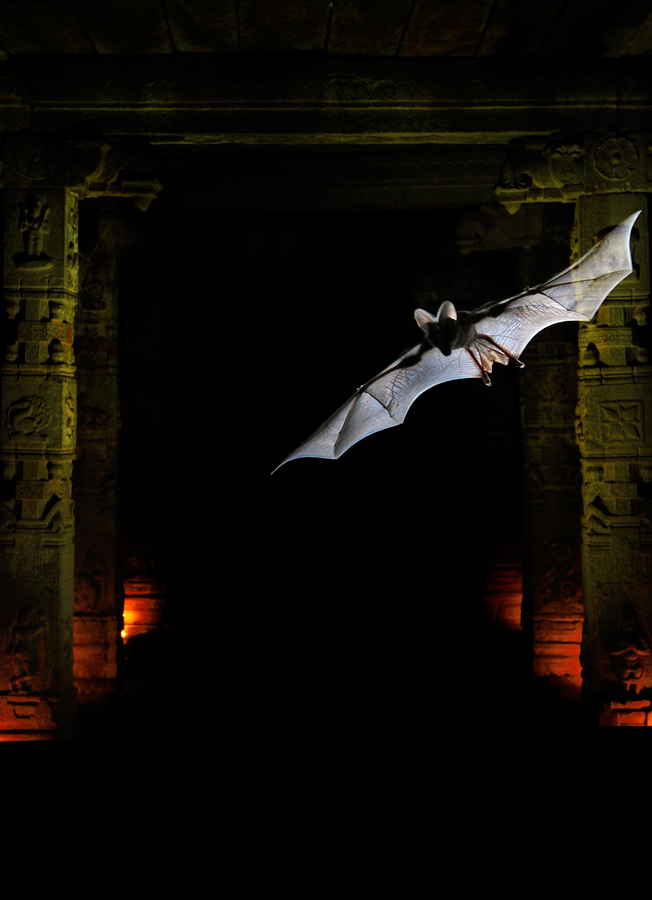
Around 2006 my friends Vijay Mohan Raj and Samad Kottur came out with an idea of making a coffee table book on Daroji. I was glad to join this effort. Mine is a relatively easy role in the whole project :) I contributed some of the images for the book. I tried making some of the not-often-seen images of bears at Daroji and some other subjects at surrounding Daroji & Hampi while the whole project and written content of the book was managed/worked on by Samad and Vijay. Photography is just one part of the book. There is a lot more interesting story and information about the place written by Vijay and Samad. I took the simple job to do only part of the photography for the book.
Since I do photography out of passion (not for living) I have been making images to meet my emotional needs. Till then I never made a series of images keeping a story in mind. But this project gave me some important experiences. There is a joy in focussed effort, there is a joy in making series of images which come together to convey something and at the end and there is joy in hand holding a large heavy coffee table book with large images. Something that can be touched is better than electrons that hit a computer display !
Let me share some of my memorable moments that I experienced while on this project over past few years.
Between 2006 and 2010 every year I made a few long trips to Daroji Sloth Bear Sanctuary. Often I use to drive alone from Bangalore to Daroji (about 350 KM) dreaming about different perspectives of images I wanted to make. Several of them remained as dreams. Samad would normally join me at Kamalapur which is about 15 KM away from the Daroji sloth bear sanctuary. We use to get up early in the morning, pack lunch and head towards the sanctuary. Forest guards Putteshi and Kumar would join us at Nallapura and we would reach the Sanctuary in the morning itself. For those who don't know Daroji Sanctuary, bears are more used to people here since forest department keeps food for them in a particular location in the sanctuary. While bears are free roaming and wild they are used to human presence. This does not mean we can walk freely in front of them. We always have to be on guard staying away from them at hides. Forest department keeps some food around noon. The bears start coming from caves behind a hillock in the evening, eat whatever food is kept and would move on. This is the routine every day at Daroji. So making an image of a bear is the easiest task at Daroji. However, we wanted to attempt at making some unique images. Not those regular images of them feeding on Banana kept on those rocks. During 2006 we used to photograph from this precariously balanced hide shown below !! The arrow in the image points to a bear there ! I was told a few months later the hide collapsed one day :) A better,safer, taller hide was made by the forest department later.

Since the bears start coming in the evening every day it was relatively safe to walk around during morning hours (we took permission from forest department and forest guards were with us). Everyday morning we would scout for probable paths of bears to burry our camera on the ground to do some wide angle perspectives from ground level like the below image using remote triggers. Once we decide on the location next few hours would be spent doing various calculations and setting up remote triggers. Remote photography is quite challenging since eyes won't be there behind the viewfinder. So we can't use auto focus. Auto exposure is always a challenge with bears. We use spend lots of time visualizing how our frame should be. We use scout for good photogenic locations, place ourselves as bear and setup the remote triggers. Sometimes we would get lucky and we would get the image we had in mind as shown in these below two images. Camera trap is set up keeping a composition in mind.

Perspective wanted

Perspective got
But number of failures were far far more than number of successes. One of the issues with using remote triggers is determining focus points. The detecting devices (sensors) just inform the camera that there is an 'obstacle' in its sensing region. The field of view of a camera and the sensing region of a remote photography sensor device are not same. For this reason we often work with manual exposure and manual focus using hyper focal distance chart using a wide angle lens. One day I after hours of work I wired my camera at some place and returned back to the hide. Later in the evening bears came down the hillock. Two big adults came down the path where I buried the camera. Right in front of the setup they stood up and fought for a few seconds. Camera went ballistic and triggered many frames. I thought I made images of my life time. Below are a few images made then. They all got highly under exposed and got spoiled. Further the composition wasn't quite right. This happened because when I set the the camera the sun was in east, when images where made in the evening camera was facing sun. I did not realize this at the time of wiring and setting the camera up. Very disappointing evening it was..


A few more images I made at Daroji and some more of my images are in the book (and some of the images shared here are not in the book too).



Resting Time !

One other memorable experience was making images of flying bats (Schneider's Leaf Nosed Bat) in a temple ruin at Hampi. It was pitch dark in the temple. We tried to work out our lighting condition such that the habitat (the temple ruin) and the mood is also gently shown along with a flying bat. We thought lighting everything using flash would kill the mood but we wanted a gentle flash on the bat. So carefully wired flash in such a way that only bat will be lit by the flash. To light up the pillar and ceilings we used candle lights and oil lamps But then it wasn't reaching at all. So thought of light painting the pillars using torch light. We set up the exposure at 3 seconds. The entry point of bats were guessed and reflective infrared triggers were wired to sense its flight in the night. Flash would go off for about 1/250sec but the shutter would remain open for 3 seconds. During this 3 seconds interval (after the bat got exposed) I would sit in the middle of the darkness in the frame and light paint the pillars and ceilings using a warm torch light. The below image shows me simulating the flight of path of a bat for setting up a camera trap.

Simulating entering bat
Here below I have couple of images we made during this experiment.


I must confess however that the results did not match the efforts that we put in. It was a huge learning though in terms of pre-visualizations and working complex/careful settings that we needed to use. All these experiments with remote triggers taught me an important lesson - while we can eventually master the technical challenges and 'get the subject in frame' it will need deeper further thought process into pre-visualizing how can we fill our frames with life and emotions when we use such unmanned techniques. I hope to focus on that aspect of making images using remote triggers in the future. It will be an enormous challenge.
Another perspective of these bats hanging made at temple ruin

Another interesting experience - One day, I wired my Nikon D200 camera at some place and buried it in ground and covered the camera with a camouflage cotton cloth. I went away and sat in the hide. Around 2 PM thick clouds started forming and soon it started pouring. I could not get out of the hide since it wasn't safe to do so. I thought I may get a chance to make an image of a bear in rain ! The camo cloth collected more water and drained it on the camera ! It rained for about couple of hours continuously and camera took a nice bath. Guess what ? Nothing happened to my D200 !! Thank God. However, no bear showed up near my set up. The dream of making a wide angle image of a bear in rain remained as dream.
So, friends, if you have not cleaned your camera for a few years now keep it in rain. It is relatively safe to keep Nikon cameras in poring rain for couple of hours :) Just kidding..
Another experience which I vividly remember. It was our last day of the last trip. After dinner Kiran and me were driving back to guest house at Kamalapur (about 15 km from Sanctuary). Just outside the guest house at Kamalapur I had to apply sudden break. It was fulfilling to see a mother bear with a little one crossing the road at night and getting inside the guest house area !!
A few other things which I remember always -
Driving on the tank bund road taking short cut from Kamalapur guest house to Daroji sanctuary was always scary experience, Probably 50 feet deep canal just 4-5 ft off the road with no barrier.
And those mouth watering hot mirchi bajjis at a roadside stall at Kamalapur was too good to forget.
Those glowing stones of Hampi and Daroji are treat to watch. They make a fine subject by themselves..

The biggest take away however for me in this project is spending time at amazing Daroji Sloth Bear Sanctuary. I will remember those photo planning sessions for ever. Spending time planning different remote photography possibilities, working with guards (Putteshi & Kumara) at the sanctuary will remain in memory for years to come. Without Putteshi's help I don't think we could have made much images there.
Personally I have learnt a lot. From photography perspective, there is some satisfaction but I could have done better. This assignment taught me a lot and made me humbler from photography perspective. There is a lot I don't know in photography. Hope to work on them in coming years when time permits.
My sincere thanks to Vijay and Samad for making me part of this project ! Without Kiran's help those bat images were not possible. Thanks to Shiv and Pramod who accompanied me during one of the trips.
BTW, this book is available for purchase online at Flipkart.com here -

It is also available for purchase at www.bookadda.com or www.indiaplaza.com.